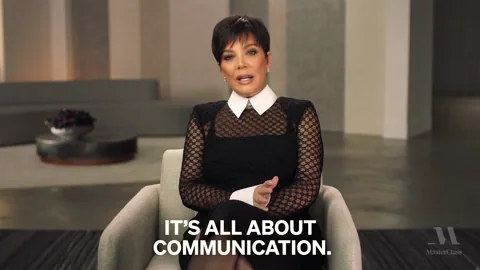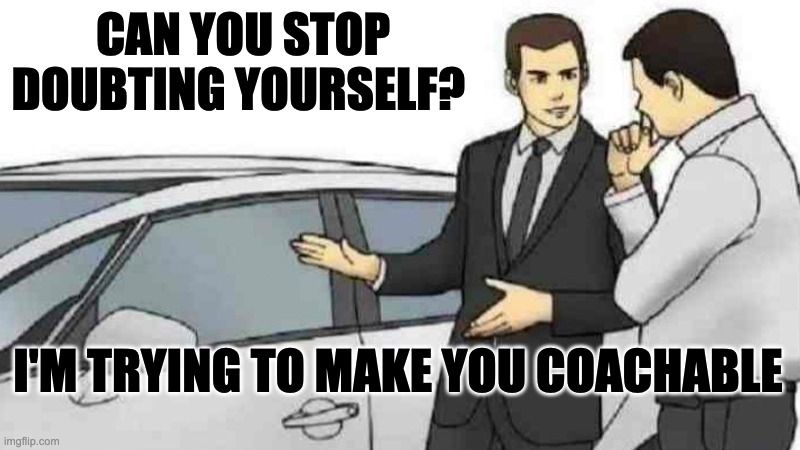 Photo by Jeffrey F Lin on Unsplash
Photo by Jeffrey F Lin on UnsplashWhen we think of great coaches, we typically think of sports. If you're a sports fan, you can probably name one or two great coaches who have impacted your favorite team over the years...but coaching is everywhere!
I have had many coaches in my own life and had opportunities to coach in my own career. Great coaches can help clients identify their key strengths and highlight areas where they might shine. I hope the lessons I learned in my own experiences will help you become a great coach, too.
What Skills Does a Great Coach Need?

A good coach can understand what kind of approach each person needs. Not everyone needs to train like Muhammad Ali, but we can all agree that he had a great coach!
As an academic skills coach for students on academic probation, I would often say that students either needed a gentle helping hand or a motivating kick in the pants. Reading what your client needs is key to successful coaching relationships.
The most impactful lessons I have learned were based in things like trust, empathy, encouragement and feedback. Just like great coaches, these skills are built and honed.
1. Trust

The best coaches understand that effective relationships are built on trust. I can attest to this from my own experience working in academic coaching.
When I worked with my students, I started from a place of curiosity. It would have been easy to assume that these students were on academic probation for a plethora of negative reasons: low performance, lack of intelligence, or a lack of drive to succeed.
When I started asking the right questions, I was able to discover that many of my students had rich and diverse experiences that sometimes just didn't fit in the traditional classroom. I had a student who opened his own designer shoe business!
Starting from a place of asking "Tell me more" rather than assuming helped me build better relationships and strengthened my own communication skills.
2. Emotional Intelligence
 Photo by Kamila Maciejewska on Unsplash
Photo by Kamila Maciejewska on UnsplashEmotional intelligence (also called Emotion Quotient or EQ) is characterized by a person's ability to understand and navigate the emotions of oneself and others. EQ is typically demonstrated in skills like empathy, self-awareness, and self-regulation.
Part of practicing emotional intelligence is understanding where we fit into the equation. When I was in grad school, I heard a phrase used talking about how we relate to different issues and how we can show our support.
Where can I best support this person?
From behind — cheering them on
In front of them — using my voice to amplify theirs
Beside them — operating as an ally and showing my support
Quiz
Carmen is coaching a new coworker and wants to build their confidence. What should she do?
3. Empathy
Empathy means being able to see things from someone else's perspective. One of the key attributes of good coaching means being able to empathize with those you coach, understand their perspectives, and provide solutions, actions, and resources that guide them toward success.
When I first began coaching as I was driven by a desire to help, rather than to understand. I came to realize that my students didn't need me to "fix" them, they needed me to see them. Empathy helps us to hold space for the experiences of others.
I had never personally been on academic probation, but I could relate to the struggles my students had like feelings of inadequacy and imposter syndrome. This helped me to understand their perspectives and coach from a place of seeking first to understand.
 Photo by Transly Translation Agency on Unsplash
Photo by Transly Translation Agency on Unsplash4. Positivity
Having a positive attitude is key to good coaching. However, sometimes it's easier said than done. When we think of positivity, it can be easy to assume that we're talking about being happy all the time. However, being positive doesn't mean we're always happy. Rather, it means that we approach life's challenges with a positive outlook.
As a coach, you can foster positivity by:
Encouraging your clients to be kinder to themselves and others
Building a culture with your clients in which you celebrate the good outcomes and process the negative ones together
Helping them get back up when they fall down

Quiz
Tamir applied for his dream job and didn't get it. He's upset and disappointed. As his career coach, what advice can you give him? Select all advice that applies:
5. Clear Instructions

Guiding clients is a huge part of being a good coach. It's hard to do that without clear and concise instructions. Let's look at a few pointers for clear instruction:
Provide clear instructions with actionable steps. Think about SMART goals. These goals are Specific, Measurable, Achievable, Realistic, and Time-bound. Using the SMART framework helps to ensure that we are communicating clearly and simply, using concrete wording.
Break down complex tasks. Ensure that everyone is clear on the expectations and what needs to happen. Breaking down complex tasks helps provide a clear sequence of steps that are more achievable.
Check for understanding. All good coaches and teachers understand the need to check for understanding. Be sure to follow up to ensure that everyone is on the same page and has a shared understanding.
6. Appropriate Feedback
Positive feedback is aimed at making your client feel valued, appreciated, and seen. This can usually take the form of pointing out what your client is excelling at or doing well. A little positive feedback can go a long way in building trust and rapport with your clients.

Corrective feedback focuses on improving or managing weaknesses. While it's never fun for clients to hear what they must improve upon, it's important to:
Identify and discuss areas for improvement
Offer concrete, actionable strategies to achieve these goals
Balance positive and corrective feedback. The drive to improve a shared experience. While it may be uncomfortable, understanding weaknesses is key to improving them. However, it is also important to build confidence — be sure to utilize both positive and corrective feedback.
Forbes Magazine recommends three key strategies for providing corrective feedback:
Use fact-based language — focus on concrete observations instead of feelings.
Set aside intentional time to discuss corrective actions — no one likes getting feedback that feels like an afterthought. Provide space and time to discuss concerns and give the recipient time to process your feedback.
Agree on future steps — The "What now?" of corrective feedback is immensely valuable because it demonstrates a clear intention on moving forward. Providing support in moving forward also gives the person receiving feedback reassurance that you want them to do well.
Take Action

Improving your coaching skills is a continuous journey, but there are a few concrete steps we can start with.
Your feedback matters to us.
This Byte helped me better understand the topic.
